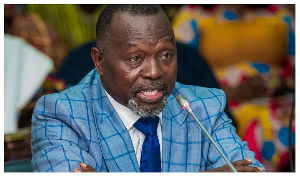To answer this question, we must remind ourselves that when we study any matter or consider any philosophy, we must ask ourselves only what are the facts and what is the truth that the facts bear out.
We must never let ourselves be diverted either by what we wish to believe, or by what we think would have beneficial social effects if it were believed, but we must look only and solely, at what the facts are. What people do with this information and how it affects their views is up to them but the facts must be accepted.
This subject has caused an enormous amount of social and political debate in recent years. There are humans that are hermaphrodites. This means that they have physiology to produce eggs and the physiology to produce sperm. They are not male or female, but they are both. Medical professionals in the nineteenth century were fascinated by individuals whose bodies showed characteristics of both sexes. The desire to confirm such ambiguous bodies as either male or female was encouraged by social significance of sex.
Ideas about true sex in the twentieth century were eclipsed by gender identity and for anatomy to match the perceived need. Hermaphrodite was replaced by a new terminology called “intersex “. The standard response to a sexually ambiguous infant has been early surgical intervention but criticism has led to the demand by intersex activists that unless necessary for health, genital surgery should be done only at an age when individuals are able to give their consent.
The general unease provoked by sexual ambiguity exposes our continuing discomfort with transgression of binary categories, whether the boundaries are broken by anatomy, sexuality, nonconformity with gendered stereotypes of identity.
The concept of the gender binary with its categorisation of individuals as male or female, has been well established in many societies for centuries. However, it is crucial to understand that biological sex not always straightforward as male or female, sex determination involves multi factors including chromosomes, gonads, hormones, and anatomical features.
Some individuals have intersex conditions where these factors do not align in a typical manner. In humans, having two X chromosomes or a x and a Y chromosome does not create binary bodies, destinies or lives. Genitals, hormones levels, and chromosomes are not reliable determinants of sex. There are for example, people with xy chromosomes who have female characteristics, people with ambiguous genitalia and women with testosterone levels outside the typical female range.
Biologically, there is no simple dichotomy between male and female. The commitment to a simple binary view creates a fictitious template for a battle of the sexes that manifests in miseducation about basic biology, the denigration of women’s rights, the justifications of incel and the creation of anti-transgender laws.
One of the oldest examples of gender binaries can be found in ancient Greece where masculinity was valued and femininity was frequently denigrated. Women were viewed as emotional, docile, and weak, while men were viewed as logical, energetic and powerful. The Renaissance was an exception when feminity was exalted in art and literature, this perspective on gender endured for a large portion of Western history.
The earliest written records of humanity are from Mesopotamia, where Sumerian and Akkadian tablets from the second millennium BCE and seventeen hundred BCE describe how the gods created humanity. References are made to types of people who are neither male nor female. These people have roles in society and names for different kinds of people. These included Eunuchs, women who could not or were not allowed to have children, men who live as women, intersex people, gay people and others.
The Catholic Church played a significant role in the establishment of the gender, particularly during the colonial era. The church’s influence on European society was enormous, and its teachings regarding gender and sexuality helped to shape the gender binary that became entrenched in European culture. The church promoted a strictly binary view of gender during the Middle Ages, with men and women occupying separate and distinct roles in society.
Men were seen as the primary breadwinners and heads of the households while women were expected to be submissive, obedient, and primarily responsible for domestic duties. This view of gender was reinforced by religious teachings that emphasised the importance of women’s chastity and submission to male authority. The Catholic Church’s role in colonisation further reinforced the gender binary as European colonisers imposed their cultural and religious beliefs on the people they colonised.
The gender binary became more firmly established during the enlightenment era when gender was often seen as a fixed and unchangeable characteristic, determined by biological sex. The rise of scientific disciplines such as anatomy, sought to reinforce gender binary by categorising and classifying human beings based on their physical characteristics and appearance.
In the nineteenth century, gender binary was further solidified by the emergence of a new concept of sexuality, which categorised individuals based on their sexual desires and behaviours. This led to the development of a rigid set of gender norms and expectations, which defined what was considered normal or abnormal behaviour based on one’s gender and sexual orientation.
Do we determine someone’s biological sex based on chromosomes or genitalia? What if a baby has gonads and a uterus? Is it a boy or a girl? In the case of genital ambiguity, who gets to decide what sex the baby is? Social media influencer Lucky Udu met a hermaphrodite called Queen Obukoko of Nigeria. This person has both male and female genitalia. She is a 30 years old and has impregnated two different women. Men have been blackmailing her because of her condition. She sees herself as a woman but men have been running away from her.
She has feelings for women even though she believes that she is a complete woman. Her second child is also an intersex. How can such a person marry another woman when same sex marriage is prohibited in Nigeria and Ghana for that matter? The children of this person would be confused to call her mother when in the binary model she is their father. This evidence-based outlook challenges the conventional belief that sex is binary. In many societies the gender binary remains entrenched, despite growing awareness and acceptance of gender diversity.
Non-binary individuals continue to face discrimination and marginalisation while traditional gender roles and expectations continue to be reinforced through media, education and social norms. Efforts to challenge and dismantle the gender binary are ongoing, including within the Catholic Church itself as many individuals and groups seek to promote more inclusive and accepting attitudes towards gender and sexuality.
The simplistic binary model is no longer sufficient. The condition of the 30 year old Queen Obukoko will have massive consequences for how we think about sex differences, sexuality and related topics. It is unfair to the diversity of persons created in the image of God and this does not go against the Christian teachings because the Bible clearly says that people are either male or female. The concept of the Eunuch is a good example for Christians to rethink the meanings of sex and gender.
Opinions of Sunday, 8 September 2024
Columnist: Jonathan Mensah



















